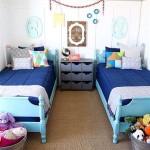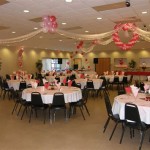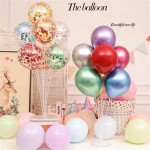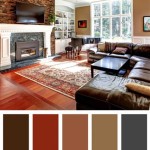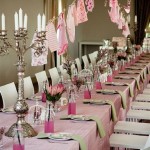```html
Room Decorating Ideas: Simple Transformations for Enhanced Living
Room decorating does not necessarily require extensive renovations or a large budget. Simple changes and additions can significantly alter the ambiance and functionality of a space. This article explores various room decorating ideas focusing on simple, effective methods to enhance the aesthetics and comfort of any room.
Optimizing Natural Light and Window Treatments
Maximizing natural light is a fundamental aspect of good room decorating. Natural light makes a room feel larger, more inviting, and can positively impact mood. Start by assessing existing window coverings. Heavy drapes might block substantial light; consider replacing them with lighter, sheer curtains or blinds that allow light to filter through.
Mirrors can also be strategically placed to amplify natural light. Positioning a mirror opposite a window will reflect the sunlight back into the room, brightening darker corners and creating a sense of spaciousness. The size and shape of the mirror should be proportional to the wall space and the overall room dimensions.
Consider cleaning windows regularly to remove dirt and grime that can obstruct natural light. A simple solution of soap and water applied regularly can make a noticeable difference.
Finally, analyze the exterior landscape. Overgrown bushes or trees near windows can impede light. Trimming vegetation can further improve the amount of natural light entering the room. Consider the effect of different plant life through the day as shadows dance within the space.
Strategic Use of Color and Paint
Color is a powerful tool in room decorating. It can influence mood, create visual interest, and define the overall style of a space. The selection of paint colors should be carefully considered based on the room's purpose, size, and available light.
Lighter colors, such as white, cream, and pastel shades, tend to make a room feel larger and more open. These colors reflect light, creating a brighter and airier atmosphere. Conversely, darker colors can make a room feel smaller and more intimate. They can be effective in creating a cozy and dramatic ambiance, particularly in bedrooms or home theaters.
Accent walls are a simple way to introduce color without overwhelming the entire room. Choosing one wall to paint in a bolder color can create a focal point and add visual interest. Consider the architecture of the room, choosing a wall that already possesses some visual appeal, such as one with a fireplace or a large window.
The finish of the paint also plays a role. Matte finishes are good for hiding imperfections on walls, while gloss or semi-gloss finishes are more durable and easier to clean, making them suitable for kitchens and bathrooms. Eggshell or satin finishes offer a balance between durability and a subtle sheen, making them a versatile choice for most rooms.
Consider the color palette of existing furniture and décor. Paint colors should complement these existing elements to create a cohesive and harmonious look. Color swatches should be tested in the room under different lighting conditions before making a final decision.
Incorporating Textiles and Soft Furnishings
Textiles and soft furnishings can add texture, warmth, and personality to a room. They are relatively inexpensive and easy to change, making them a versatile way to update a space.
Throw pillows and blankets are simple yet effective ways to introduce color, pattern, and texture. Experiment with different sizes, shapes, and materials to create visual interest on sofas, chairs, and beds. Consider the seasonal changes and adjust the textiles accordingly. Lighter fabrics such as linen and cotton are suitable for summer, while heavier fabrics like velvet and wool are ideal for winter.
Area rugs can define a space, add warmth, and protect flooring. Choose a rug that is appropriately sized for the room and complements the existing furniture and decor. In living rooms, the rug should ideally be large enough to accommodate all of the furniture, or at least the front legs of the furniture. Consider the pile height of the rug based on the traffic of the room. A low-pile rug is more durable and easier to clean in high-traffic areas.
Curtains and drapes not only provide privacy and light control but also add texture and visual interest. Choose fabrics that complement the overall style of the room and consider the weight and opacity of the fabric based on the desired level of light control. Layering curtains with blinds or shades can provide even greater flexibility.
Consider the use of slipcovers to refresh old or outdated furniture. Slipcovers are a cost-effective way to update the look of a sofa or chair without having to replace the entire piece. They are available in a variety of colors, patterns, and materials, allowing for easy customization.
Adding Personal Touches with Art and Accessories
Personalizing a room with art and accessories is crucial for creating a space that reflects individual style and interests. These elements add character, create focal points, and contribute to the overall ambiance of the room.
Artwork can be a powerful way to express personal taste and create visual interest. Choose pieces that resonate with personal preferences, whether it be paintings, prints, photographs, or sculptures. Consider the size and scale of the artwork in relation to the wall space and the surrounding furniture. A large statement piece can create a dramatic focal point, while smaller pieces can be grouped together to create a gallery wall.
Bookshelves are not just for storing books; they can also be used to display decorative objects and accessories. Create a visually appealing arrangement by mixing books with decorative boxes, vases, picture frames, and other personal items. Consider arranging books by color or size to create a more organized and visually appealing display.
Plants can add life, color, and texture to a room. Choose plants that are appropriate for the lighting conditions and the overall style of the room. Potted plants can be placed on windowsills, shelves, or tabletops, while larger plants can be used to fill empty corners. Consider using a variety of different types of plants to create visual interest.
Lighting fixtures are not only functional but also serve as decorative elements. Choose lighting fixtures that complement the overall style of the room and provide adequate illumination. Consider using a combination of ambient, task, and accent lighting to create a layered lighting scheme. Table lamps, floor lamps, and sconces can be used to add warmth and ambiance to a room.
Consider small decorative items like unique candles, interesting vases or bowls, or collections of objects. These items can add personality and character to any room.
Decluttering and Organizing for a Sense of Calm
Clutter can detract from the aesthetics of a room and create a sense of chaos. Decluttering and organizing are essential steps in creating a calm and inviting space. A well-organized room feels more spacious, relaxing, and conducive to productivity.
Start by removing any items that are no longer needed or used. This could include clothing, books, household items, or anything else that is taking up space unnecessarily. Consider donating or selling unwanted items to reduce clutter and give them a new life.
Invest in storage solutions to keep items organized and out of sight. Baskets, bins, shelves, and drawers can be used to store a variety of items, from toys to books to household supplies. Choose storage solutions that are both functional and aesthetically pleasing.
Maximize vertical space by using shelves and wall-mounted organizers. This can be particularly helpful in small rooms where floor space is limited. Consider using shelves to display books, plants, and other decorative items.
Create designated areas for specific activities. This can help to keep the room organized and prevent clutter from accumulating. For example, create a reading nook with a comfortable chair and a bookshelf, or a home office area with a desk and storage for office supplies.
Routinely declutter and organize the room to maintain a sense of calm and order. A little bit of maintenance on a regular basis can prevent clutter from building up and becoming overwhelming.
Rearranging Furniture for Improved Flow
Simply rearranging existing furniture can dramatically alter the feel and function of a room. This simple act can improve traffic flow, create new focal points, and make better use of available space. This is one of the most immediate and cost-effective decorating changes possible.
Begin by assessing the current furniture arrangement. Consider how people move through the room and identify any obstacles or awkward layouts. The goal is to create a more functional and inviting space.
Focus on creating a focal point in the room. This could be a fireplace, a large window, or a striking piece of artwork. Arrange the furniture to draw attention to this focal point and create a sense of balance.
Consider the placement of the sofa and chairs. These pieces should be arranged to encourage conversation and create a comfortable seating area. Avoid placing furniture directly against the walls, as this can make the room feel smaller. Instead, leave some space between the furniture and the walls to create a sense of spaciousness.
Experiment with different layouts to see what works best. Use graph paper to create a floor plan and try out different furniture arrangements before physically moving the furniture. This can save time and effort. Ensure pathways are clear and allow easy movement through the room.
```
410 Best Diy Bedroom Decor Ideas

Simple Bedroom Decorating Ideas Home Design Jennifer Maune

26 Designer Guest Bedroom Ideas And Essentials

Diy Bedroom Decorating Ideas Domino

7 Simple Summer Bedroom Decorating Ideas Setting For Four Interiors

Simple Bedroom Decoration Ideas To Try In Stan Cheezain Etc

100 Diy Room Decor Ideas That Work For Any Bedroom Simple Easy

Small Bedroom Decoration Ideas On A Budget

Mauve Lous Guest Bedroom Ideas A Simple Spare Room Refresh Sustain My Craft Habit

101 Bedroom Decorating Ideas 2025 Interior Design
Related Posts
